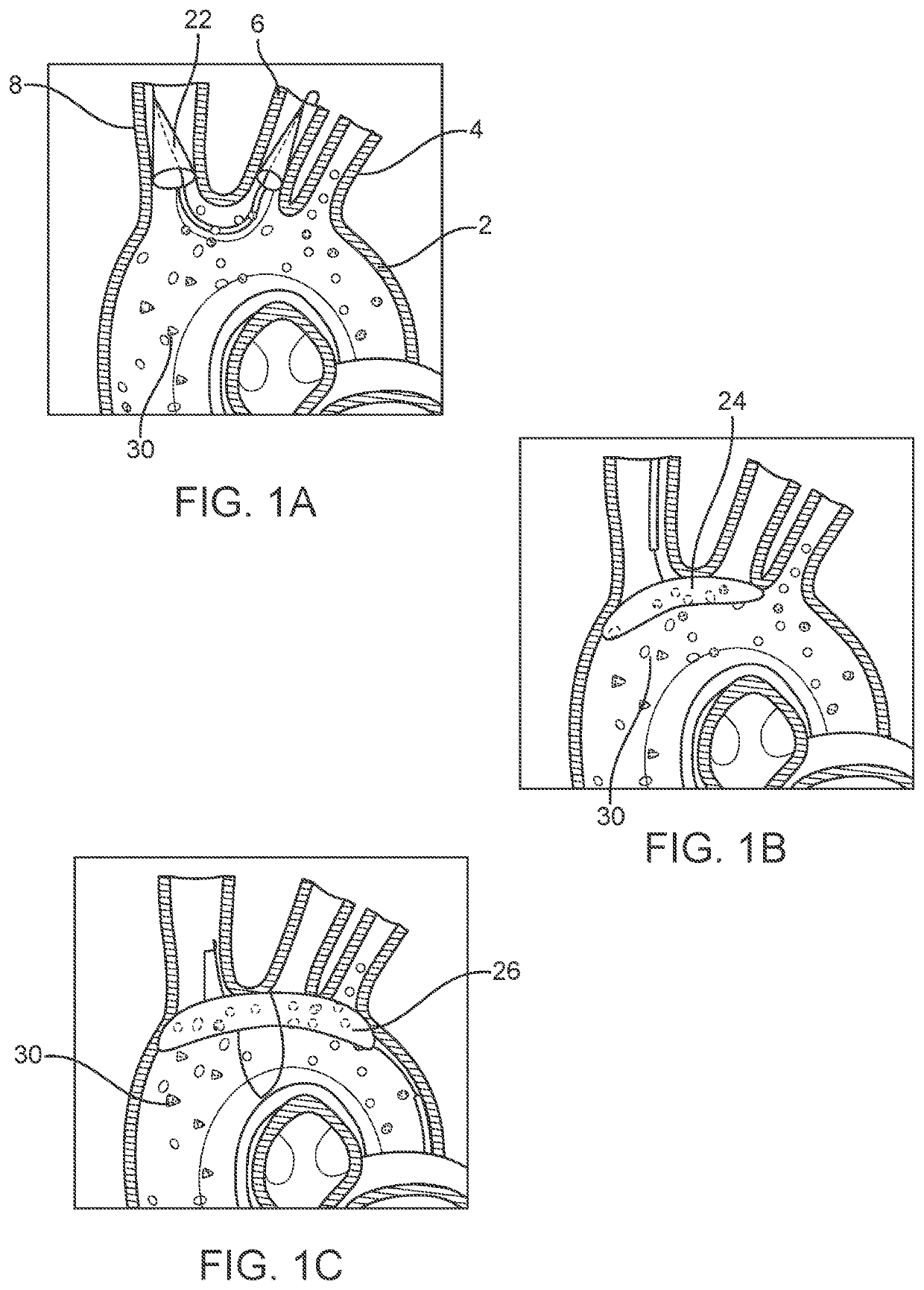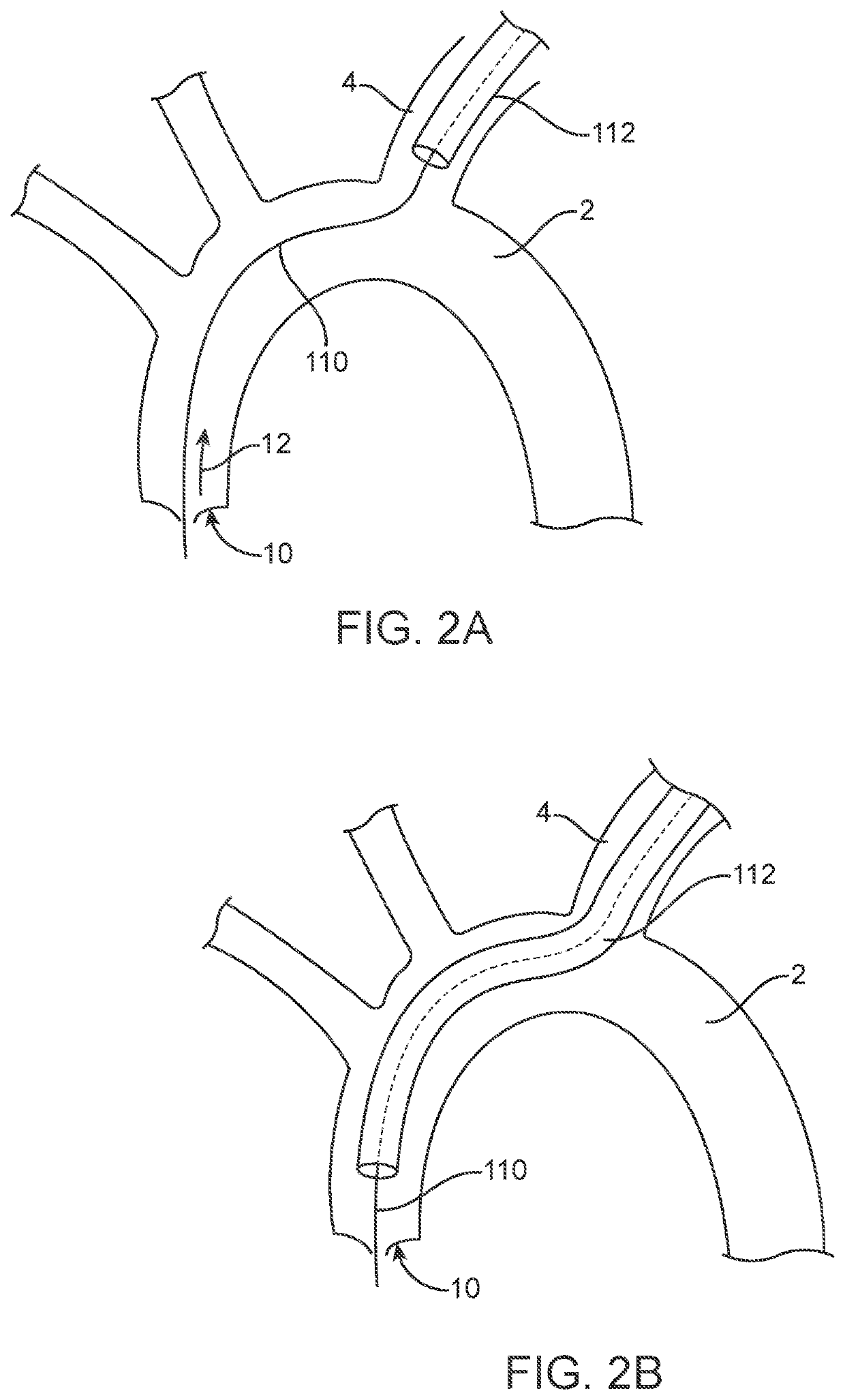Accessory device to provide neuroprotection during interventional procedures
a neuroprotection and accessory device technology, applied in the field of accessory devices to provide neuroprotection during interventional procedures, can solve the problems of ischemic cerebral stroke, risk of emboli passing, and clot or thrombi within the vasculature dislodging the procedure,
- Summary
- Abstract
- Description
- Claims
- Application Information
AI Technical Summary
Benefits of technology
Problems solved by technology
Method used
Image
Examples
Embodiment Construction
[0056]It is understood that the examples below discuss uses in the aortic arch to protect cerebral vasculature (namely the arteries). However, unless specifically noted, variations of the device and method are not limited to use in the cerebral vasculature. Instead, the invention may have applicability in various parts of the body. Moreover, the invention may be used in various procedures where the benefits of the method and / or device are desired.
[0057]FIGS. 2A to 2I illustrates an example of the flow assisted sealing of the present disclosure. In this variation, a guidewire 110 advances through the left subclavian artery 4 to permit positioning of a filter system (not shown in FIG. 2A) using a radial artery approach. Such an approach allows a TAVR system to be delivered from a femoral artery without the filter system reducing the available space within the vessel. Many TAVR systems are large, typically 12-18 French in diameter, so variations of a filter system that is also delivere...
PUM
 Login to View More
Login to View More Abstract
Description
Claims
Application Information
 Login to View More
Login to View More - R&D
- Intellectual Property
- Life Sciences
- Materials
- Tech Scout
- Unparalleled Data Quality
- Higher Quality Content
- 60% Fewer Hallucinations
Browse by: Latest US Patents, China's latest patents, Technical Efficacy Thesaurus, Application Domain, Technology Topic, Popular Technical Reports.
© 2025 PatSnap. All rights reserved.Legal|Privacy policy|Modern Slavery Act Transparency Statement|Sitemap|About US| Contact US: help@patsnap.com



